
Tech & Sci
22:55, 21-Oct-2017
Innovation contributed to agricultural growth in China
CGTN's Guo Meiping
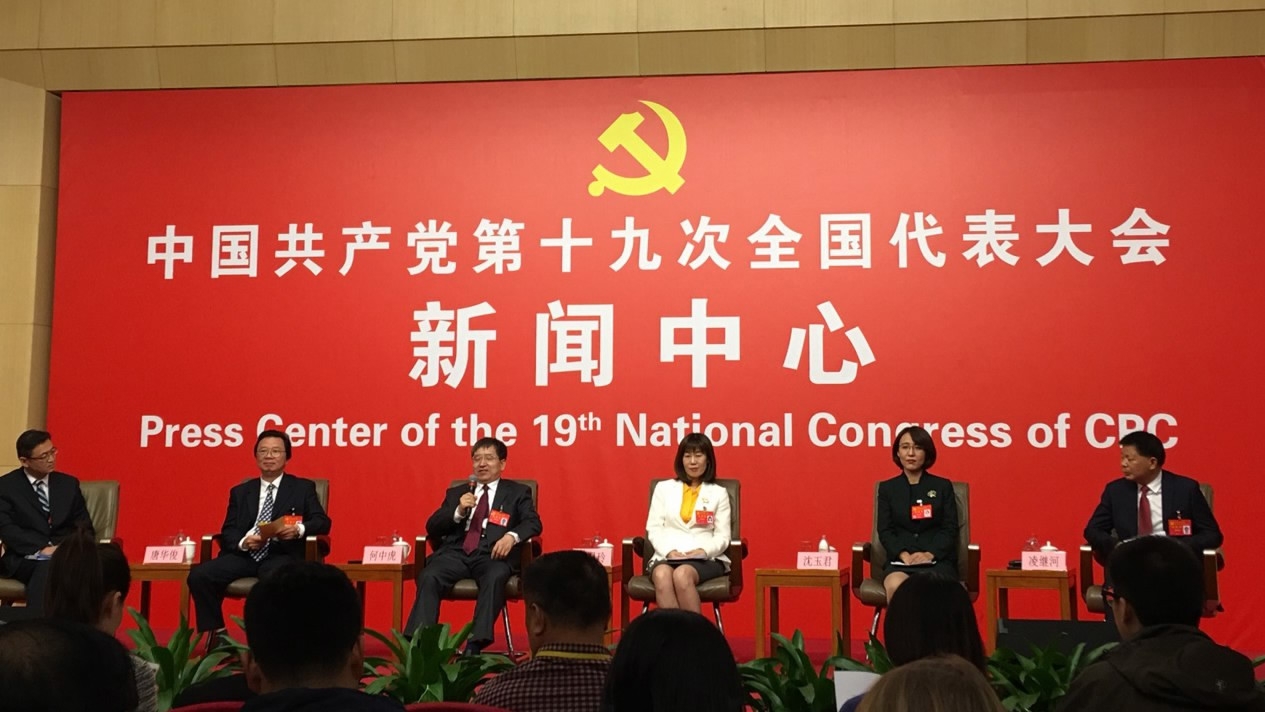
China has been making remarkable progress in agricultural scientific and technological innovation since the 18th CPC National Congress, mainly reflected in three aspects:
Firstly, the independent innovation ability keeps strengthening. A wide range of important new theories, methodologies and technologies have been developed, bringing basic research of agricultural genomics for rice, cucumber and silkworms to the world’s advanced level.
Secondly, there have been constant breakthroughs in key technologies such as new varieties of Super Rice, GM BT cotton, canola and millet. Increased grain output is part of the results.
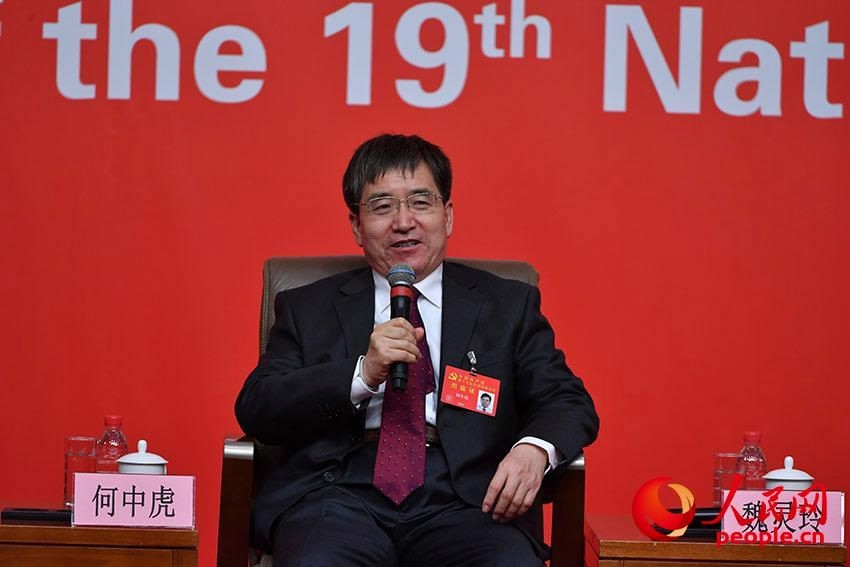
He Zhonghu, the chief scientist of the Chinese Academy of Agricultural Sciences (CAAS) Wheat Breeding Program and director of National Wheat Improvement Center. /People's Daily Photo
He Zhonghu, the chief scientist of the Chinese Academy of Agricultural Sciences (CAAS) Wheat Breeding Program and director of National Wheat Improvement Center. /People's Daily Photo
According to He Zhonghu, the chief scientist of the Chinese Academy of Agricultural Sciences (CAAS) Wheat Breeding Program and director of National Wheat Improvement Center, the wheat output per unit yield in China last year was 355 kilograms on 360 million mu (240 thousand square kilometers) of farmland, which was 60 percent higher than the world average level. And the overall output reached the world highest with a number of 128 million tons, counted 17 percent of the world total output.
Thirdly, the foundation of innovation has been further consolidated. During the last five years, the central budget earmarked a total of 1.34 billion yuan (202 million US dollars) for the improvement of key laboratories of the Ministry of Agriculture.
Currently, the percentage contribution of science and technology to agricultural growth has reached 56.7 percent, mechanized tilling, seeding, and harvesting has covered over 65 percent of acreage of major crops, and the coverage of improved varieties for major crops has exceeded 96 percent, according to the press release provided by the 19th CPC National Congress Press Center.
Extension of agricultural technology
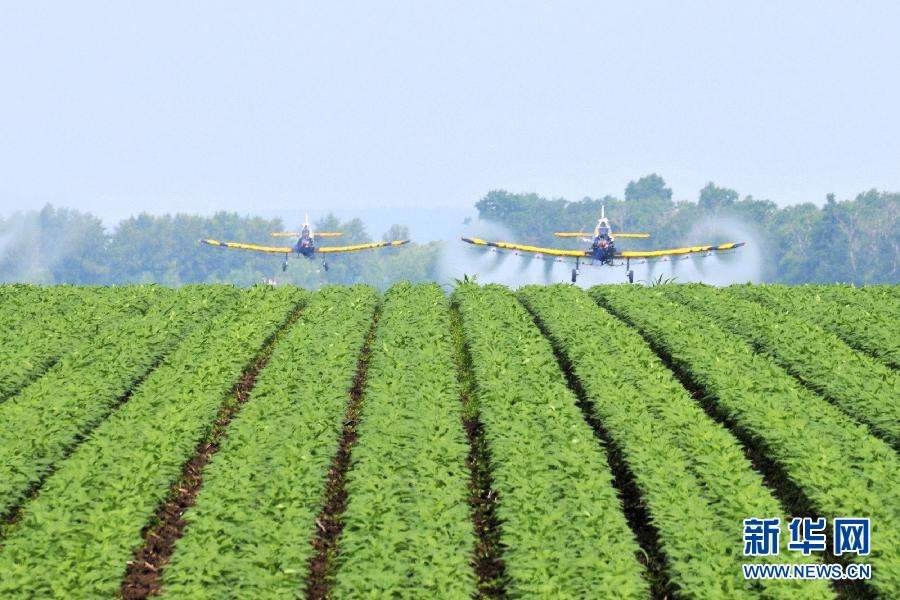
Xinhua Photo
Xinhua Photo
The agricultural technology extension system has been further enhanced. Most agricultural counties in China have benefited from a total of 5.85-billion-yuan (883 million US dollars) earmark from the central budget in building offices and purchasing equipments. And the government has invested 2.6 billion (393 million US dollars) per year for technician training.
Also, clear focus has been established in technical extension. China has been putting efforts in developing technologies to prevent agricultural disasters, facilitate the integration of machinery and agronomic practices, and improve resource efficiency.
In terms of personnel training, China has encouraged and guided agricultural institutes and farmers to join agricultural extension service by launching pilot special employment program of agricultural extension technicians in seven extremely poor regions in the country. The cultivation of new-style professional farmers has also been strengthened.
Closer connection between technology and industry
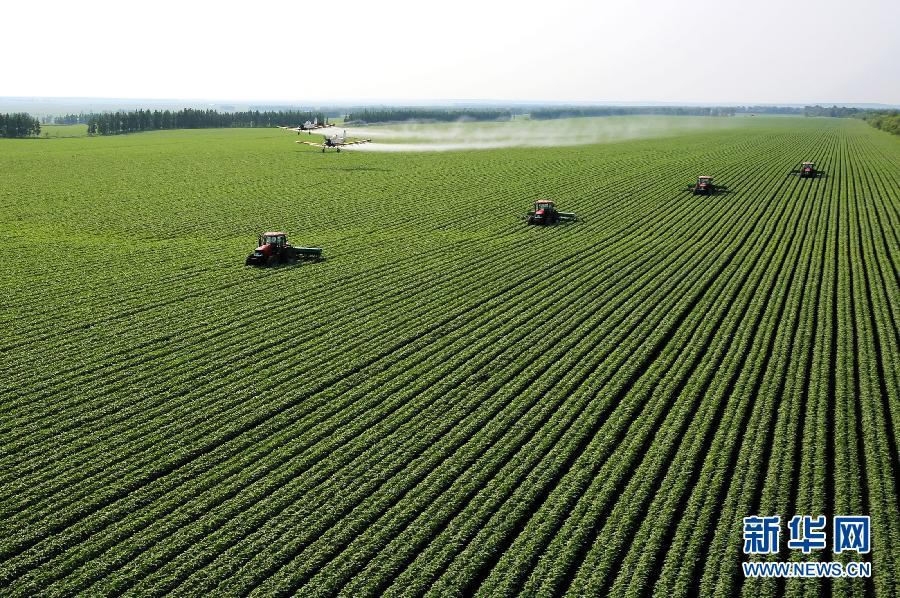
Xinhua Photo
Xinhua Photo
In order to solve issues like dispersion of technology resources, low level and duplication of research, and lack of connectivity between technology and economy, China have made full use of institutional advantages of the socialist society to conduct research on important issues and promote close connection between scientific research, experiment, extension and application.
By pooling resources across the country, China has established modern agricultural industry and technology system that cover 50 major agricultural products, and supported nearly 2,700 agricultural experts.
Over 50 agricultural scientific and technological innovation alliances with over 1,000 participating agencies and enterprises have been established since 2014 to address major issues in a sector, an industry or a region.
China also established a group of regional centers for modern agricultural technology innovation with a view to build synergy among government, industry, financial institutions, research institutes and other service providers.
China’s recent agricultural breakthrough
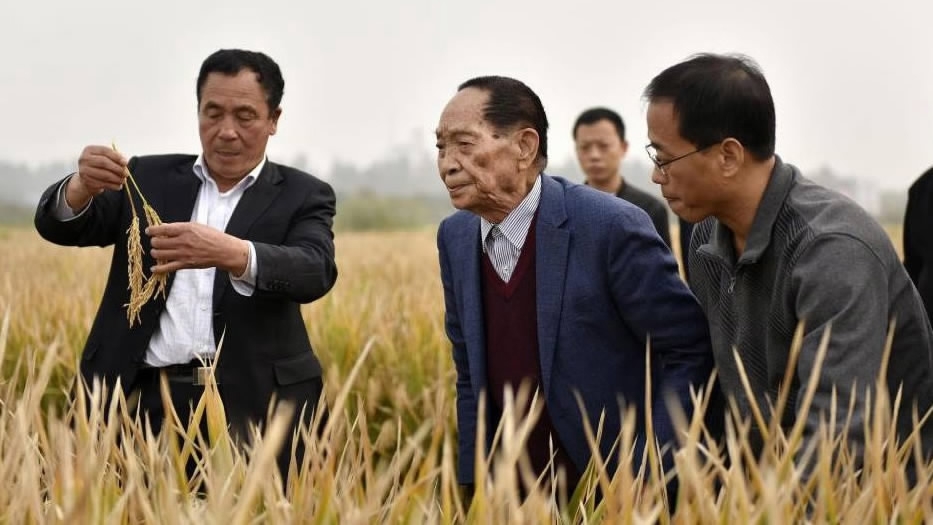
Yuan Longping (C), "the father of hybrid rice" in China. /Photo via Hebei Daily
Yuan Longping (C), "the father of hybrid rice" in China. /Photo via Hebei Daily
China’s hybrid rice project headed by Yuan Longping has achieved a new world record with a yield of 17.2 tons per hectare at Yongnian super hybrid rice paddy in north China’s Hebei Province on October 15.
The record-setting variety of rice is named “Xiangliangyou 900”, due to its 16.8 tons per hectare output in Yuan’s Hebei and Yunnan provinces respectively. Both broke previous world records for the highest yield in high-latitude areas as well as output on 100 mu (66,667 square meters) of farmland.
According to a field hand, their fine management, including more irrigation and weeding, has contributed to the high yield.
87-year-old Yuan Longping, known as "the father of hybrid rice" in China, was born in Beijing. He graduated from Southwest Agricultural College in 1953, and was assigned to teach crop genetics and breeding at an agricultural school in China's southern Hunan Province.
Yuan began rice production research about 50 years ago and has been breaking records in hybrid rice yields ever since. He was awarded a medal from the French government in recognition of his contribution to world food safety and other agricultural prizes.
(CGTN's Su Yuting also contributed to this article.)

SITEMAP
Copyright © 2018 CGTN. Beijing ICP prepared NO.16065310-3
Copyright © 2018 CGTN. Beijing ICP prepared NO.16065310-3